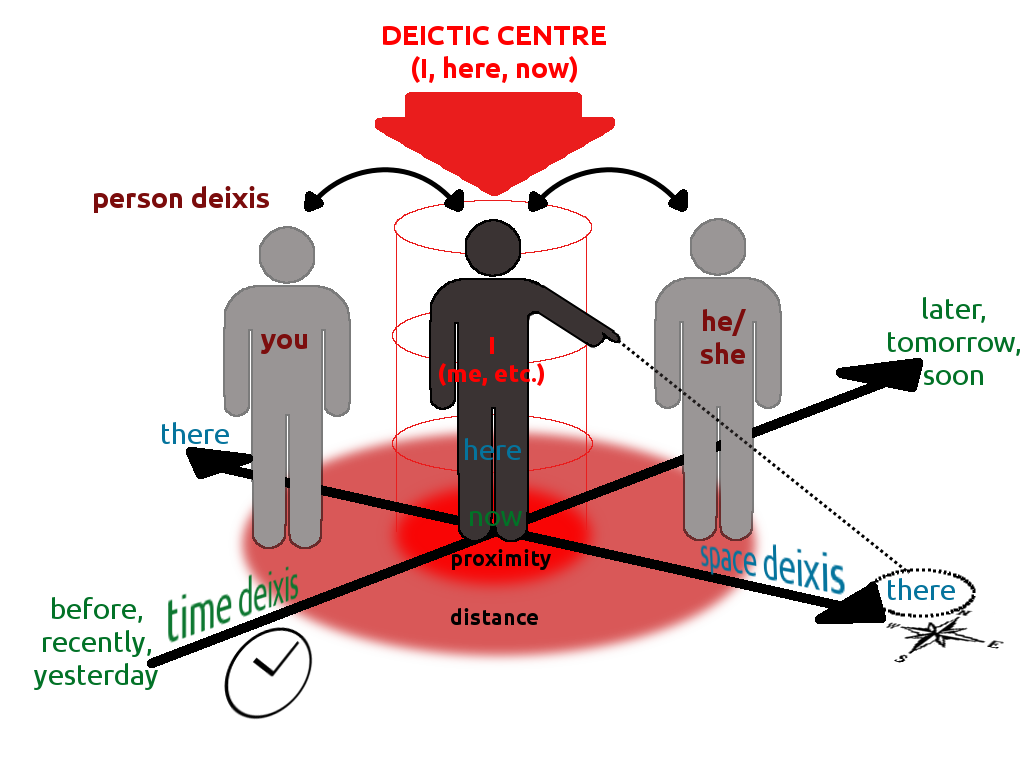In an earlier post, I introduced the notion of linguistic relativity, or the Sapir-Whorf Hypothesis. Linguists who argue for the hypothesis posit that language affects the way that we think and see the world. Studies like the ones I mentioned in that post (that grammatical gender has an affect on the way we describe inanimate nouns) are frequently used to support the hypothesis. This week’s post will discuss another often-cited aspect of language considered to influence people’s worldview: how we give directions in language.
In English we have a number of different ways to express directions. We have what are called egocentric directions, where the main point of reference is (generally) the speaker. Because of this, we often have to ask people “my left or your left?” We also have cardinal directions, which are the geographical terms North, South, East, West. We tend to only use these when we know an area well, or when we are looking at a map. Cardinal directions are part of a larger system of reference known as an absolute frame of reference, where the things being referred to do not change based on the position of the speaker.
When A is fairly far away from B (say, half a mile, or 20 miles, or 300 miles), we are more likely to use the cardinal directions, for example “He lives 50 miles west of Chicago.” If we want to describe something nearby, we use egocentric directions, or relative directions, like “The book is to your right,” or “You turn left at the next block over.”
Relative directions are part of a larger system of what linguists call deixis. Deictic words require some context in order to be understood. For instance, if you use the word “he,” you need to have introduced some specific person earlier in the conversation for your listener to know who you’re talking about. There is a general sense of proximity in time and space for most deictic words in English and other European languages. The graphic below is from Wikipedia, and illuminates some of the concepts behind deixis and reference in English.

from Wikipedia
However, there are other languages that use linguistic directions differently. In the Australian language of Guugu Yimithirr, speakers do not use egocentric directions, and instead use cardinal directions to describe situations where English speakers would use “right” or “left.” It would not be considered bizarre in this language to say “Watch out for that pile of dog poop north of your foot,” or “Could you please hand me the book that’s east of the globe?” Another language, a Mayan language called Tzeltal, uses a similar system, referring to North as “uphill” and South as “downhill”.
One could imagine, in a Whorfian view (that language affects thought), that this would affect the way that speakers of Guugu Yimithirr perceive the world. Their language requires them to know where North is in a situation where an English speaker wouldn’t, so we could reasonably predict that they might be better at knowing where the cardinal directions are than a speaker of English. And that turns out to be true.
Cardinal directions are not the only way of expressing an absolute frame of reference. In Balinese, a language of Indonesia, directions are expressed not with reference to the cardinal directions, but in fact with reference to a single volcano in the center of the island, called Gunung Agung. A Balinese speaker giving directions would have to know where this volcano is, anywhere in the world, like a Muslim praying towards Mecca. And like Mecca, this is not only the geographical and referential center of Bali, but it is also the spiritual center of Bali. Gunung Agung is where the Hindu gods of Bali are said to reside.
Again, the Sapir-Whorf hypothesis is not something that is 100% proven by any of the evidence, but these studies give us some insight into some of the ways that language may affect thought.

